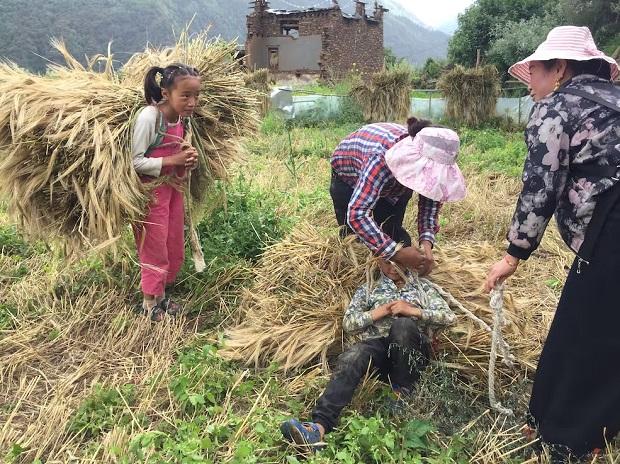Anthropological study in rural China
For most people around the world, physical work takes up a significant amount of time and energy every day. However, it is not always clear whether it is men or women who are working harder in households. In hunter-gatherer societies, men are typically the hunters and women are the gatherers. But what is the labor breakdown in other societies? A recent study conducted in the Tibetan borderlands in rural China aimed to uncover the factors that determine who works the hardest in a household and why.
Marriage and Bargaining Power
The majority of adults around the world are married. Marriage is a contract, so one would expect roughly equal costs and benefits from the union for both parties. However, unequal bargaining power in a household – such as one person threatening divorce – can lead to unequal contributions to the partnership. The study hypothesis was that leaving one’s natal area after heterosexual marriage to live with the spouse’s family may contribute to a higher level of workload.
Dispersal Patterns in Marriage
In such marriages, the new person typically is not related to and does not share a history with anyone in their new household. Without blood relatives around them, they might therefore be at a disadvantage when it comes to bargaining power.
- The most common form of marriage around the world is where women are the “dispersers”, leaving their native home, while men stay with their families in their natal area. This is known as Patrilocality.
- Neolocality – in which both sexes disperse at marriage and the couple lives in a new place away from both their families – is another common practice in many parts of the world.
- Matrilocality – where women stay in the natal family and men move to live with the wife and her family – is quite rare.
- Duolocality – where neither sex leaves home and husband and wife live apart – is very rarely seen.
Women work harder
In the diverse Tibetan borderlands, all four of these different dispersal patterns can be found across various ethnic groups. The study focused on rural villages from six different ethnic cultures. With collaborators from Lanzhou University in China, the researchers interviewed more than 500 people about their dispersal status after marriage and invited them to wear an activity tracker (like a fitbit) to assess their workloads.
The first finding was that women worked much harder than men and contributed most of the fruits of this labor to their families. This was evidenced both by their own reports of how much they worked and by their activity trackers. Women walked on average just over 12,000 steps per day, while men walked just over 9,000 steps. Men also worked hard, but less so than women. They spent more time in leisure or social activities, or just hanging around and resting.
The study highlights that physical weakness may be one reason for the imbalance in workload, but the main factor is the dispersal status after marriage. Individuals who disperse at marriage to live away from their kin have higher workloads than those who stay with their natal families. Perfect sex equality in workload only occurs in instances where men disperse and women do not. These results help us to understand why women globally disperse, but men generally do not. Dispersal is especially bad for men – adding about 2,000 more steps per day to their step count, but only adding about 1,000 steps per day for women.
Month: Current Affairs - January, 2023
Category: Reports & Indexes Current Affairs


